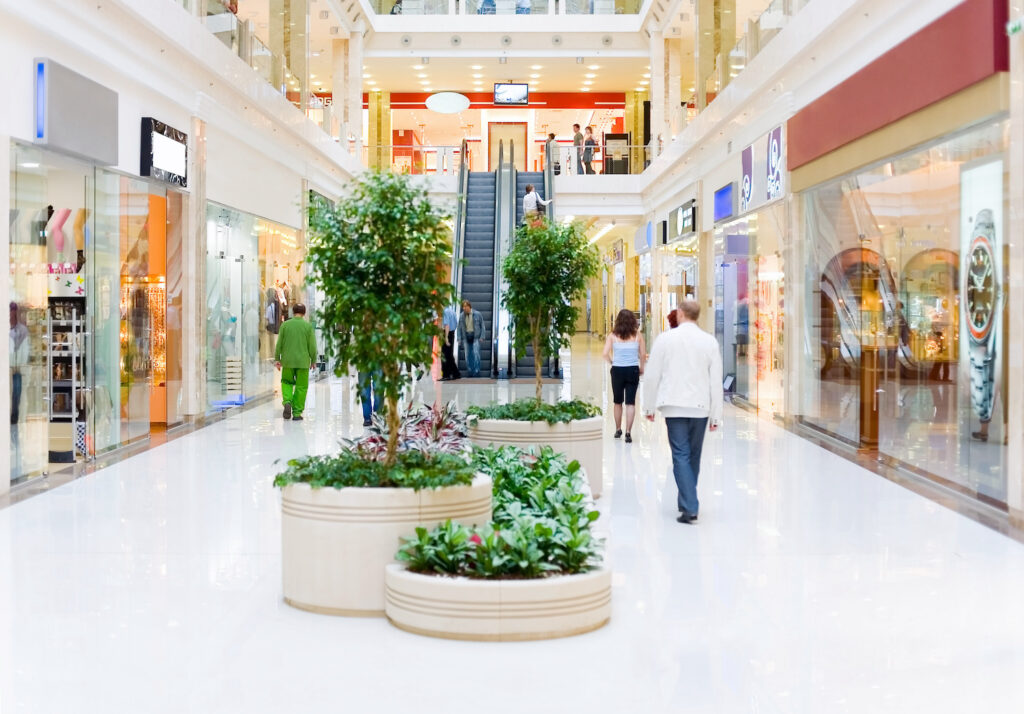Smart Water Management Helps Leading Retail Company Achieve ESG and Sustainability Goals

“HydroPoint has been the ideal partner in our sustainability journey, providing smart water management solutions that are easy to implement and maintain. Thanks to the real-time water usage data from WaterCompass, we’ve been able to quickly respond to leaks that would’ve otherwise set us far back in our water conservation efforts. With the help of these water use efficiency products, I’m proud to say we’re well on our way to meet our 2030 zero water waste goals.”
— V.P. of Corporate Responsibility and Sustainability
One of the leading owners, operators, and developers of top retail and mixed-use properties in the U.S. has established aggressive and admirable ESG goals — including achieving carbon neutrality by 2030 and zero water waste and landfill impact by 2025-2030.
With 25+ malls and plazas in the drought-prone West, this organization understands the importance of water conservation. They set out to reduce their net water consumption by 50% while still maintaining thriving landscapes, to protect the curb appeal and aesthetics of their properties. They needed a sustainability investment with rapid ROI that would deliver quantifiable results to share with stakeholders and be easy to implement and maintain. HydroPoint was the answer — offering smart water management solutions for both indoor and outdoor usage.
The organization outfitted its irrigation systems with WeatherTRAK smart controllers that use weather data and specific plant irrigation requirements to deliver the exact amount of water based on landscape needs. WeatherTRAK has become the system of choice for all new developments and significant redevelopments, giving real-time visibility and control over site water usage.
Minimizing water leaks also helps them run a tight ship. The company has implemented WaterCompass, a leak detection and water-use analytics service that helps establish baseline water usage and detects when water usage is exceeding normal levels. It automatically sends alerts to property teams when a leak is detected, so they can identify and repair it quickly.
The system can differentiate between a “catastrophic leak,” which is unexpected high-water use, and a “slow continuous leak,” which detects water use during off hours when there shouldn’t be any. In less than a year, the WaterCompass pilot paid for itself by detecting leaks that would have otherwise gone unnoticed, reducing the company’s water use by 5 million gallons in only five months.
HIGHLIGHTS
- 35,000,000+ gallons of water conserved in a single year
- On track to meet 2030 net zero water goal
WaterCompass continues to be vital in helping this retail leader minimize high water costs from undetected leaks and breaks. As a result, they’ve approved an expansion of WaterCompass to all their locations in California and Arizona to conserve as much water as possible and be especially mindful of drought conditions.
While they already conserved over 35,000,000 million gallons of water in 2021 alone, they are also implementing several other water management strategies to eliminate unnecessary water usage. For example, they are swapping out water-intensive grass for high-performance turf, native plants, and low irrigation landscaping to conserve water outdoors. Indoors, they’re installing water-saving fixtures, including low-flow fixtures, aerators, and automatic shutoffs.
LEAKS DETECTED WITH WATERCOMPASS
- 9,490 gallons of water per hour at a premier mall in Arizona — would have cost $44,640.96 per month if it remained undetected
- 1,681 gallons per hour from a mainline break at a Colorado shopping center — would have cost $7,907.42 per month if it remained unresolved
- 1,493 gallons of water per month at a high-end Arizona mall due to broken sprinkler rotors — would have cost $7,023.07 per month if not identified and resolved
Additionally, the organization continues to explore other avenues to conserve water, such as treating wastewater on-site, harvesting rainwater and returning it to the original water supply, and working with development and construction partners to find opportunities for water capture and reuse projects.
They are setting a shining example for other organizations — leading the way in creating the most resilient and attractive properties with the least environmental impact. Partnering with HydroPoint allowed them to quickly and efficiently install smart water management technology that ensures they meet their water conservation goals. They’ve already reduced their overall water usage by 11% from 2015, putting them well on their way to meet their 2030 net zero water goal. As a result, the organization is on track to become the first in the industry to achieve carbon neutrality by 2030, two decades ahead of the goal established in The Paris Agreement.

